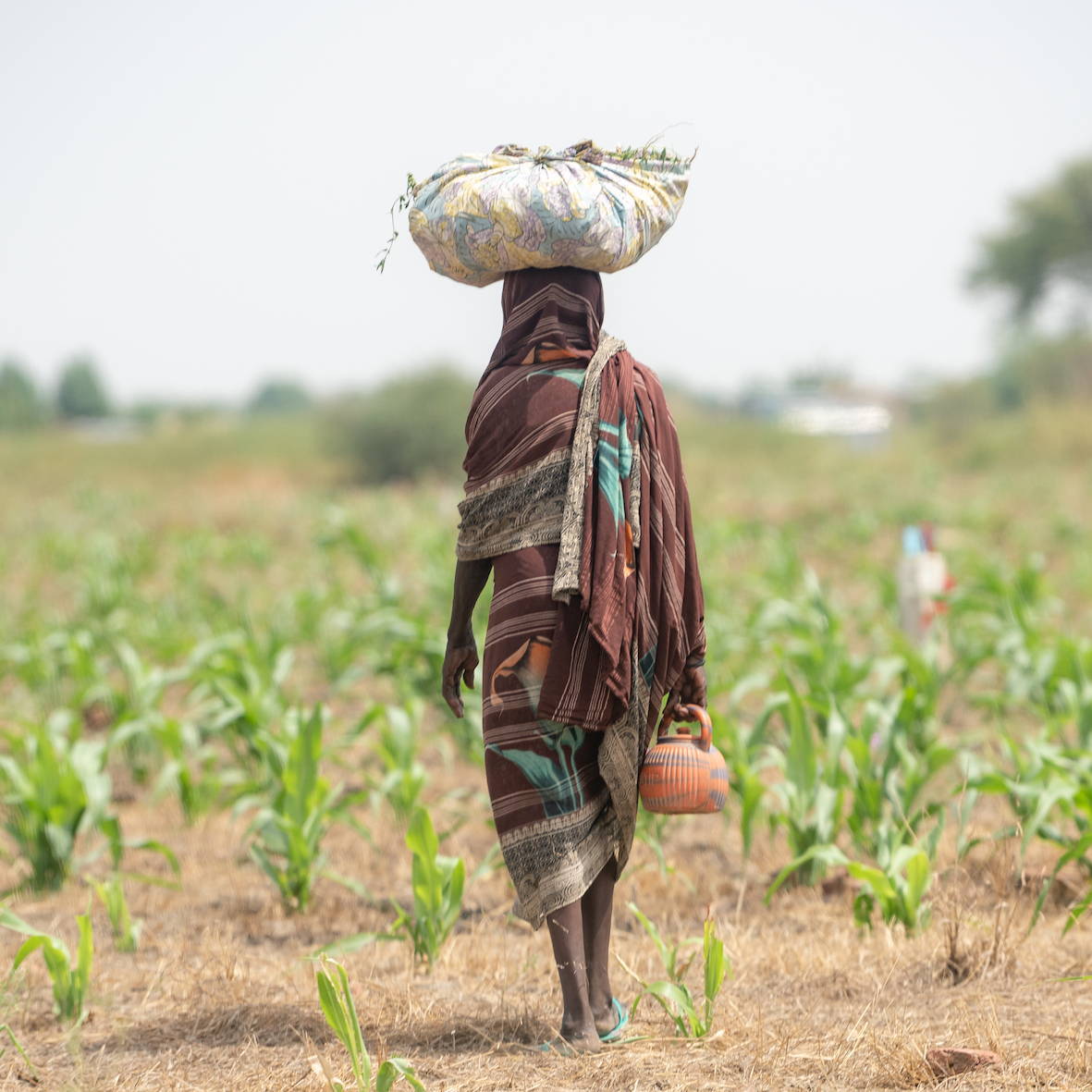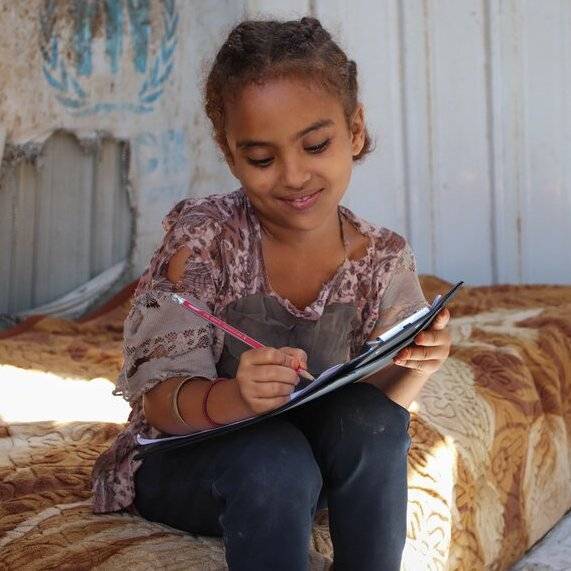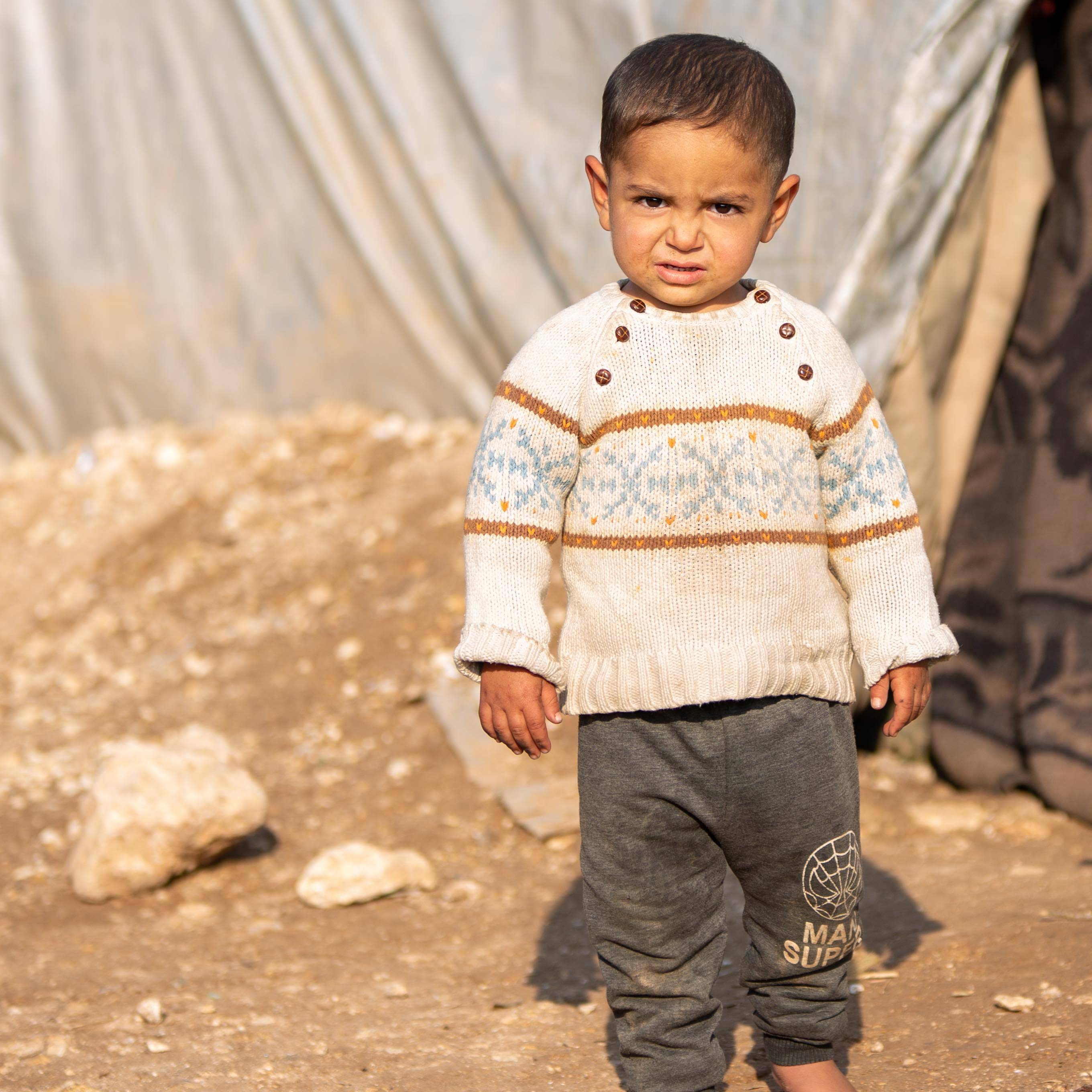
Syrian refugee
image: Shutterstock
Goal 2: Zero Hunger
How does war cause hunger?
War and famine are closely connected. Highlighting the crisis in Syria, we explore why and how you can help, right now
By EMMA ELMS
24 JUNE 2021
Of the 155 million children worldwide aged under five with stunted growth, nearly 75% live in countries affected by conflict, according to a 2018 UN report. By understanding the link between war and hunger, we can take steps to address this catastrophic combination and work towards improving the livelihoods of millions of children.
1. Decrease in food aid
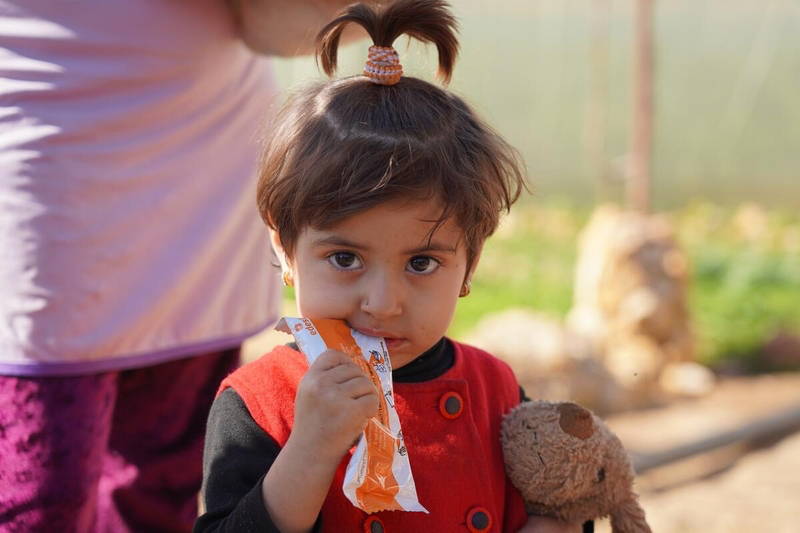
Siba, aged two, in Syria eating a
nutritional peanut paste from WFP
image: WFP/Hussam Al Saleh
Those living in conflict zones often desperately need food aid, but one or both sides may block relief operations from reaching civilians, leaving them to battle hunger alone. Sometimes it can simply be too dangerous for aid workers to deliver the supplies people rely on, with the threat of attacks against humanitarian organisations, despite them only wanting to provide impartial support. According to Save the Children’s War on Children report, since 2010 there has been a 1500% rise in incidents of humanitarian access being denied. Analysis by the charity Care International found that Syria is the most dangerous place to be a humanitarian aid worker, after a 30% rise in attacks was reported in the country last year.

The UN’s World Food Programme, which we’re partnering with for our Goal 2 #TOGETHERMEALS campaign, is the world’s largest humanitarian agency fighting hunger, covering war zones such as Syria and Yemen. We’re collaborating with WFP through ShareTheMeal, its incredible app allowing you to provide food to hungry people across the world, including areas torn apart by conflict. Since it was founded nearly 60 years ago, WFP has led dozens of famine-response operations, saving millions of lives. Last year alone, WFP reached almost 100 million people in more than 80 countries, but more funding is desperately needed.
2. Food: a weapon of war
Hunger and conflict can form a vicious circle, according to WFP. While hunger makes conflict more likely to flare up, food can also be used as a weapon of war. Cutting off food supplies can be a deliberate and cruel military strategy, but in 2018 the UN Security Council passed a resolution officially condemning the use of food insecurity and starvation as a tactic of war. Aimed at countries in conflict, the resolution ordered all parties not to sabotage food stocks, burn crops, destroy farms, plunder markets and so on. It also demanded warring countries allow humanitarian aid workers to deliver essential supplies, stating that ‘using starvation of civilians as a method of warfare may constitute a war crime.’
‘The millions of men, women and children going hungry as a result of armed conflict will not be reduced unless and until these fundamental principles are followed,’ the joint UN agency report stated.
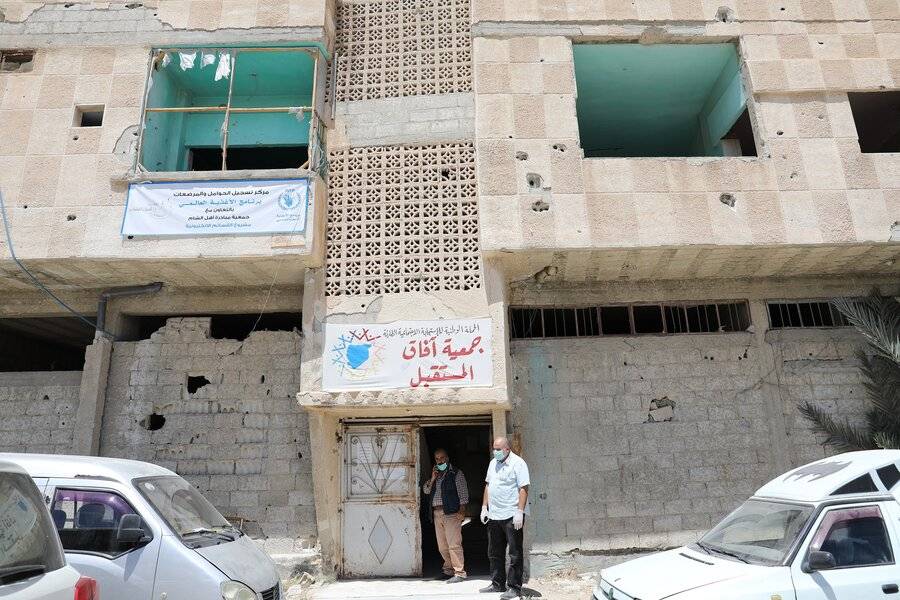
A banner indicates WFP's office on the first
floor of a shelled building in Damascus
image: WFP/Hussam Al Saleh
Last year, WFP was awarded the Nobel Peace Prize for acting as a ‘driving force in efforts to prevent the use of hunger as a weapon of war and conflict’. Berit Reiss-Andersen, the chairwoman of the Norwegian Nobel committee, said they gave the award to WFP because they wanted to ‘turn the eyes of the world to the millions of people who suffer from or face the threat of hunger.’
3. Losing your home
In cities under siege, civilians who are forced to flee can no longer produce stable crops or manage livestock, reducing the availability of food not just for their families, but for those they may sell to as well. Displacement also contributes to the failure of local food markets – as simply not enough people are left living in the area to buy and sell produce.
The war in Syria has led to 6.7 million people being internally displaced, according to WFP, which is a major cause of the country’s hunger crisis, along with decreased agricultural production. In a report last year, the campaigning charity Amnesty International also accused the Syrian Government forces of ‘restricting access to UN humanitarian aid agencies across Syria.’
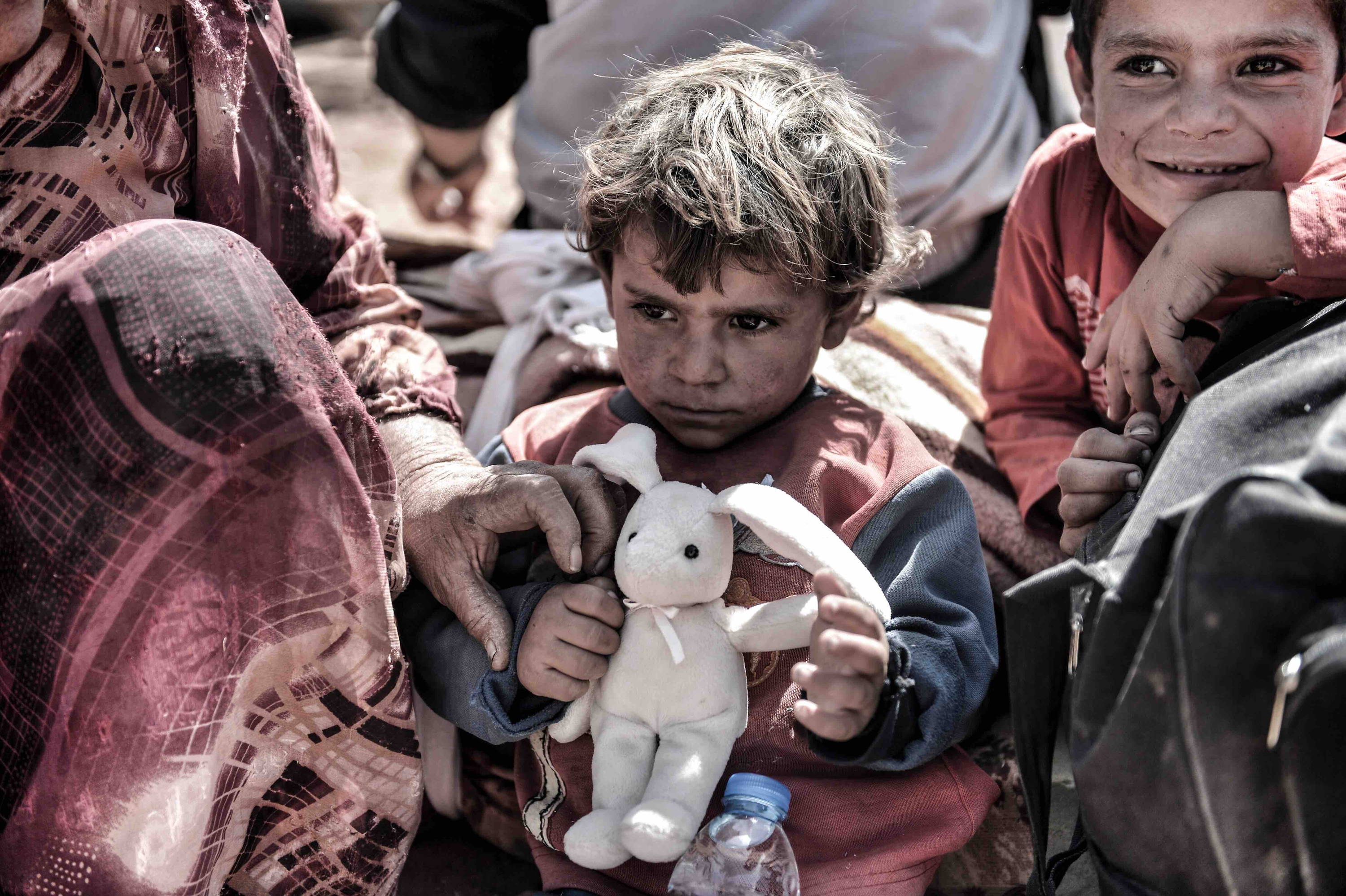
Syrian refugee
image: Shutterstock
4. Lack of income
Aside from the very real human cost, war also has severe economic consequences, according to Tejvan Pettinger, founder of the Economics Help website. It can lead to economic decline, the collapse of livelihoods, a drop in the working population, rising debts, loss of infrastructure, uncertainty and drastically reduced spending power.
A major report by Oxfam back in 2007 entitled ‘Africa’s Missing Billions: International Arms Flows and The Cost of Conflict’ found that armed conflict costs Africa about $18 billion (£12.9 billion) per year, seriously derailing development and driving millions into hunger and poverty.
5. Food insecurity
Being ‘food-insecure’ is defined by the Food and Agriculture Organisation of the United Nations (FAO) as when a person ‘lacks regular access to enough safe and nutritious food for normal growth and development and an active and healthy life.’ This could be due to unavailability of food but also a lack of resources to be able to buy or grow food.
A lack of consistent access to food or rocketing food prices can be a significant factor in sparking or exacerbating conflict. One powerful example is the Arab Spring uprisings in 2011 which took place when food prices had hit record highs in North Africa and the Middle East.
A recent report by WFP, showed that in Syria food prices have risen by 200% just in the last year. As costs have increased, families have been forced to take desperate measures to cope. The WFP survey reveals some families are cutting down from three meals per day to two, more people are buying food on credit and others are selling assets and livestock to generate income.
Spotlight on Syria
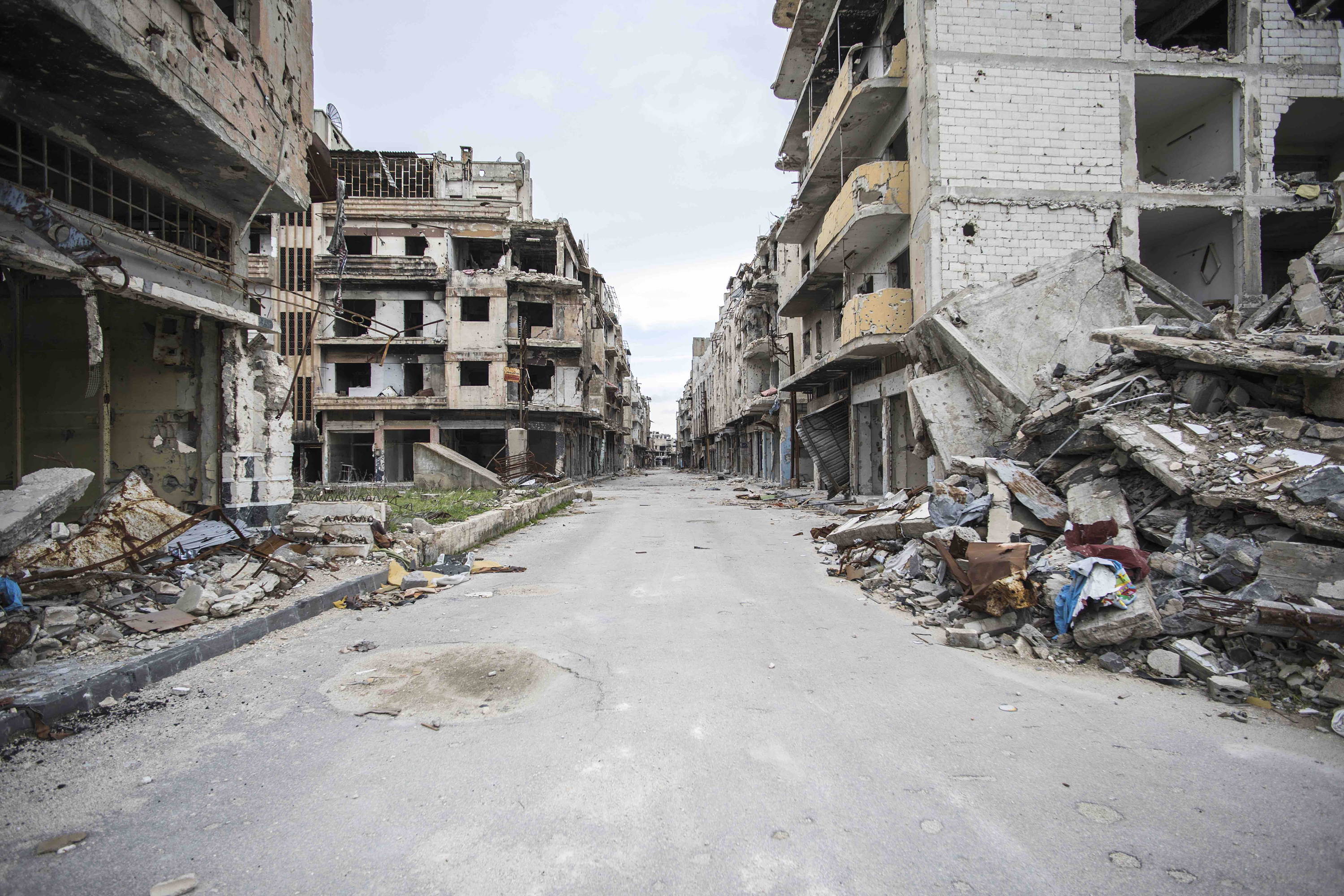
City of Homs, Syria
image: Shutterstock
How a decade of war has caused a hunger crisis
· After 10 years of conflict, upheaval and displacement, Syrians are grappling with their worst hunger crisis ever.
· A recent report by WFP and partners estimates that a record 12.4 million Syrians – nearly 60% of the population – now suffer from hunger and food insecurity, double the number in 2018.
· In the last year alone, around 4.5 million people in war-ravaged Syria have sunk into hunger and food insecurity.
· WFP has provided monthly food assistance for nearly five million people inside Syria over the past decade, as well as giving food aid to over 1.5 million Syrian refugees in neighbouring Turkey, Lebanon, Jordan, Iraq and Egypt. These five countries host more than 5.6 million Syrians, the largest refugee group in the world.
'Everyone is suffering one way or another'

Nour Abdallah, a field monitor for WFP in Syria
image: WFP/Hussam Al Saleh
Here Nour Abdallah, a field monitor for WFP in Syria, explains the harsh reality of hunger in her war-torn homeland
‘My country is suffering from one of the worst crises of the 21st century,’ says Nour Abdallah. Food prices across Syria are skyrocketing and more than 12 million people don’t have enough to eat. ‘Almost everyone is suffering from the consequences of conflict in one way or another,’ she says. ‘Very few families have been spared.’
As a field monitor for the World Food Programme (WFP), her job is to ensure that the right food reaches the people who need it the most in Siria. Nour grew up in Aleppo in Syria, but when conflict broke out in 2011, life changed for her and millions of others. She left her home, her city and made a new start.
‘My family moved to Damascus after our house was destroyed. We found safety, security and I started to work with WFP in 2019. I decided to become a humanitarian so I could serve people who need many things. At least, working at WFP, I can do one thing to help people who are suffering.
‘My work requires me to be on the ground with the families who are severely affected by the crisis. This is both the best and most challenging part of my job. I like to meet people, listen to them and hear what’s happening in their lives so that we can best support them. But it also makes me feel sad because we can’t do everything. Even when I return home, I still think of the people I have met and how much they are suffering. This motivates me to work harder to make sure they can get the help they need.’ And her hopes for the future of Syria? ‘Peace,’ she replies simply. ‘For people in Syria and everyone around the world.’
Interview by Jessica Lawson and Hussam Al Saleh
#TOGETHERMEALS: We’re aiming to provide at least 5000 meals to people in need across the world, including those living in war zones, and we’d love your help. If you’re able to make a donation, please download WFP’s ShareTheMeal app and head to #TOGETHERMEALS Challenge page in the community section. For just 65p you provide a meal to a person in desperate need.

